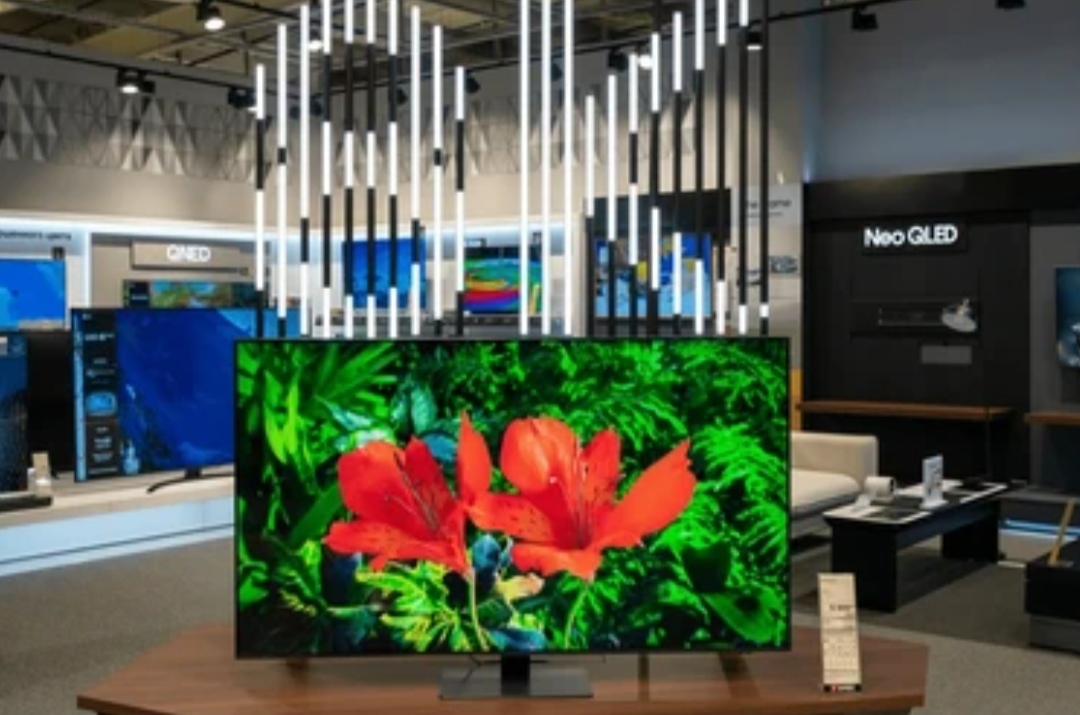🔎 Introduction — What You Need to Know About 8K TVs
Television technology has come a long way from the bulky CRTs of the past to today’s ultra-slim, ultra-high-definition displays.
And now, we’re standing at the edge of the next big shift in home entertainment — the rise of 8K TVs.
But before you decide to splurge on the latest and greatest tech, it’s essential to understand the 8K TV pros and cons.
This guide is designed to break everything down for you — in a clear, unbiased, and up-to-date manner.
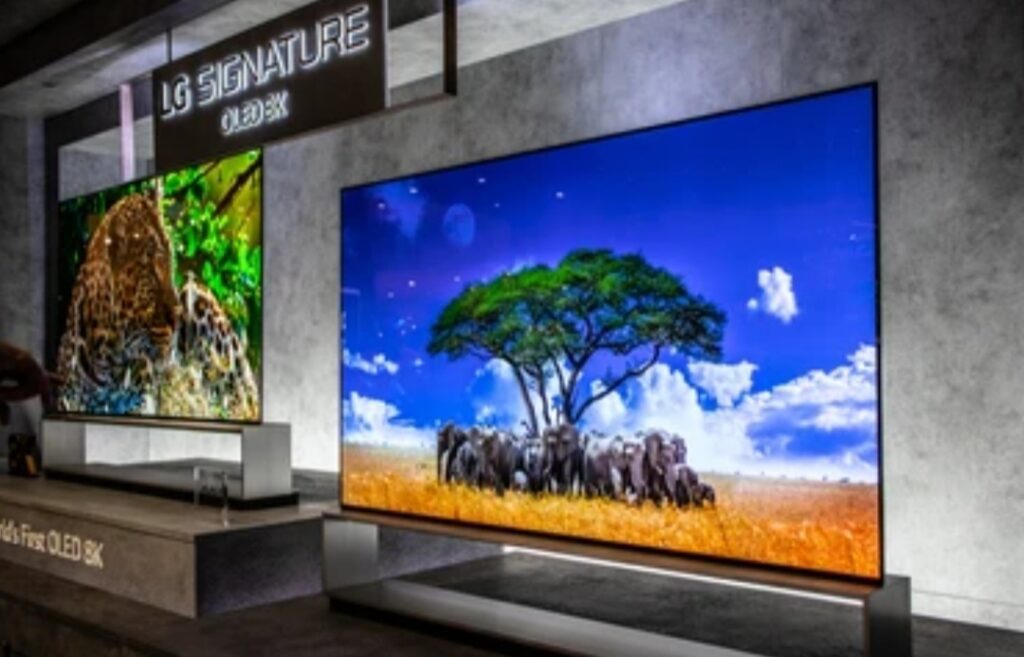
So, what exactly is an 8K TV?
To put it simply, an 8K television boasts a jaw-dropping 7680 x 4320 pixels — that’s four times the resolution of 4K and a whopping 16 times more pixels than Full HD (1080p).
This means richer detail, deeper colors, and incredibly lifelike images, especially on larger screens.
🎯 But here’s the catch — is the difference even noticeable to the average viewer?
Does it really make sense to invest in this cutting-edge technology right now?
Before we get into the nitty-gritty, here’s what this article will give you:
✅ A complete breakdown of what makes 8K TVs tick
✅ An honest look at the advantages and drawbacks (yes, we’re talking real-life impact)
✅ The truth about content availability, pricing, gaming benefits, and more
✅ Expert insight and buyer-focused analysis to help you decide: Is it finally time to upgrade?
We’ll also sprinkle in comparisons with 4K vs. 8K TVs, industry trends, and where 8K stands in the broader home theater evolution.
Whether you’re a movie buff, a gamer, or just someone who wants the best visuals possible — you’ll find answers here.
⭐ Pro Tip: Always consider your room size, viewing distance, and the type of content you watch most often before committing to an 8K setup.
👉 Thinking of upgrading? Don’t jump in blind.
Read this full breakdown first to find out whether an 8K TV is truly worth your money or just marketing hype!
🧠 Understanding 8K Resolution
To truly grasp the value of an 8K TV, you first need to understand what 8K resolution means, and how we arrived at this jaw-dropping level of picture clarity.
From black-and-white screens to today’s mind-blowing ultra HD panels, the television landscape has transformed radically.
Let’s break it all down.
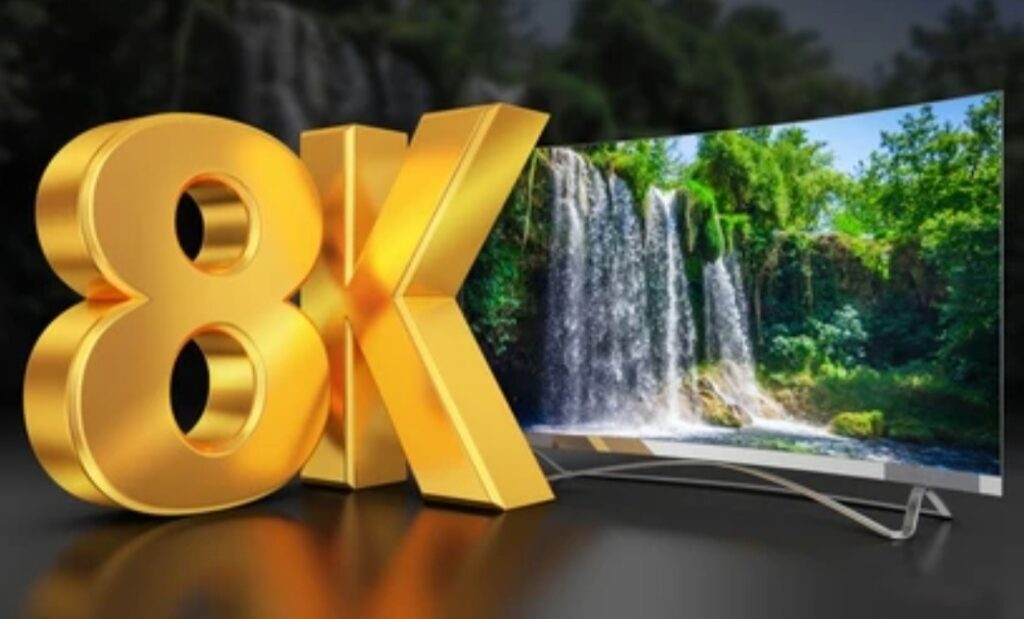
🔢 What Is 8K Resolution?
When we say “8K,” we’re referring to a television display that boasts a resolution of 7680 pixels horizontally and 4320 pixels vertically.
This equates to over 33 million pixels on the screen — to be exact, 33,177,600 pixels.
In comparison:
- 4K TVs have 3840 x 2160 resolution (≈ 8.3 million pixels)
- Full HD (1080p) TVs have 1920 x 1080 resolution (≈ 2 million pixels)
That means 8K TVs have four times more pixels than 4K, and 16 times more than Full HD.
The result? Crystal-clear detail, sharper edges, smoother textures, and the ability to display visuals with staggering realism — especially on large screens over 65 inches.
📸 Imagine watching nature documentaries or high-speed sports with that level of precision.
You’re not just watching a screen — you’re stepping inside it.
💡 That’s why brands like Samsung, LG, Sony, and TCL have jumped on the 8K TV bandwagon, competing to bring the most vibrant displays to your living room.
✅ Key Advantages of 8K Resolution:
- Stunning image clarity, even when viewed up close
- Ultra-smooth edges, without pixelation on massive screens
- Next-level immersion for gamers, movie lovers, and streamers
- Upscaling capabilities (AI upscaling can convert 4K/HD to 8K-like visuals)
But here’s the honest truth:
While the visual quality is undeniably impressive, content made in native 8K is still very limited.
Most shows, movies, and games are still produced in 4K or lower — which brings us to the first real consideration in the 8K TV pros and cons debate.
🧠 Pro Tip: If you’re sitting more than 8–10 feet away from your screen, you may not notice a big visual improvement over 4K — unless you’re watching content on a 75” screen or larger.
📺 The Evolution of Television Resolutions
To appreciate how far we’ve come, let’s rewind the tech timeline a bit.
TV resolutions have evolved over decades, slowly pushing the boundaries of what the human eye can experience.
Here’s a breakdown of the most significant resolution milestones:
📉 Standard Definition (SD) — 480p
This was the early era of analog broadcasts and CRT televisions.
Content was blurry by today’s standards, with minimal detail.
🖼️ High Definition (HD) — 720p
The first real step toward clarity.
HD TVs brought a big leap in sharpness and allowed for widescreen content.
It became the new normal in the 2000s.
💻 Full HD (FHD) — 1080p
A major game-changer.
Full HD provided even clearer visuals, perfect for Blu-rays and HD streaming platforms.
Most households adopted this resolution during the 2010s.
📽️ Ultra HD / 4K — 2160p
Currently the mainstream choice.
4K TVs dominate the market, and streaming platforms like Netflix, Disney+, and YouTube now support 4K content.
The level of detail is fantastic — but once again, tech enthusiasts wanted more.
🌌 8K Ultra HD — 4320p
This is the frontier.
8K not only offers mind-blowing detail but also future-proofs your entertainment setup.
It’s a bold leap into next-gen viewing — even if the content ecosystem is still catching up.
🎥 Here’s how 8K compares to previous resolutions:
| Resolution | Pixel Count | Clarity Rating | Common Screen Sizes |
| SD (480p) | 640 x 480 | Low | < 32″ |
| HD (720p) | 1280 x 720 | Moderate | 32″ – 40″ |
| Full HD (1080p) | 1920 x 1080 | High | 40″ – 50″ |
| 4K UHD | 3840 x 2160 | Ultra High | 50″ – 65″ |
| 8K UHD | 7680 x 4320 | Elite (Mind-blowing) | 65″ and above |
🧠 Did You Know?
Some 8K TVs are now equipped with AI-based upscaling algorithms that “rebuild” lower-resolution content frame-by-frame, mimicking the crispness of native 8K.
This technology has greatly improved — making 8K TVs more practical today, even when true 8K content is scarce.
So far, we’ve looked at how 8K compares with other resolutions.
But is that enough to justify the cost?
Let’s now explore the complete list of 8K TV pros and cons so you can make an informed decision before pulling out your credit card.
⚡ Before you buy an 8K TV, you need to know both sides of the coin.
Read on to discover if 8K really delivers value — or if it’s just another hype cycle.
👉 Ready to make the ultimate TV upgrade?
Stick around — the next section uncovers the truth about 8K TV benefits and drawbacks you absolutely need to know!
✅ The Pros of 8K TVs
8K TVs have been called the “future of home entertainment” — and for good reason.
They offer technological breakthroughs that can transform your viewing experience into something that feels larger than life.
In this section, we’ll explore the biggest benefits of owning an 8K TV and why enthusiasts, gamers, and early adopters are upgrading.
These advantages will help you understand the “pros” side of the 8K TV pros and cons debate — so let’s dive in.
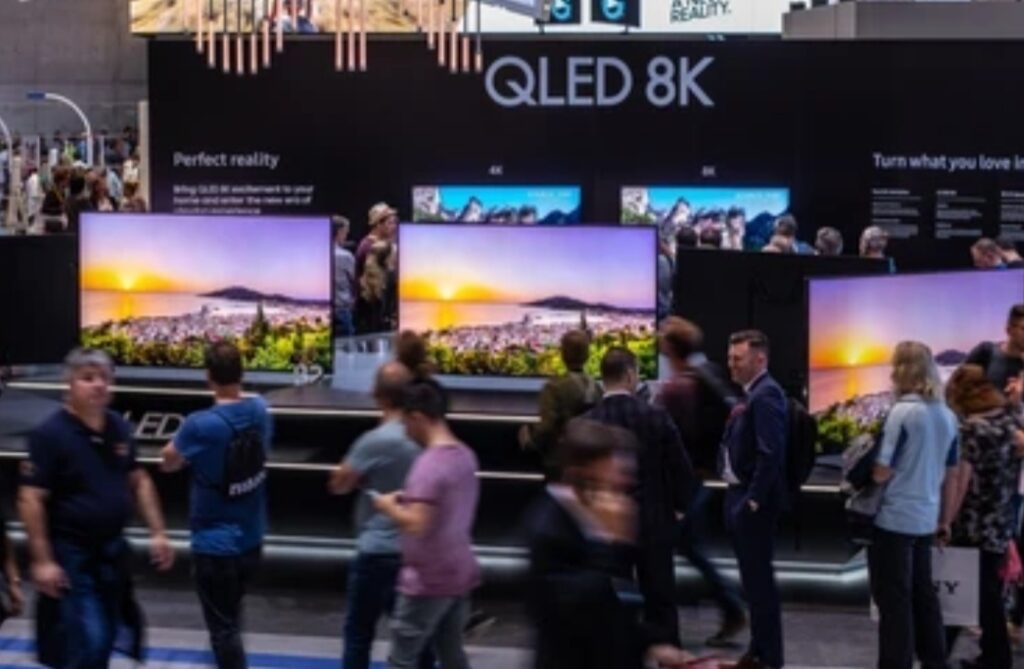
🌟 Unparalleled Picture Clarity
The No.1 reason most people consider upgrading to an 8K TV is the unmatched image quality.
With 33 million pixels, 8K displays deliver razor-sharp images that are significantly more detailed than 4K or 1080p.
Whether you’re watching wildlife documentaries or sci-fi thrillers, the textures are so precise that you can see individual hairs, grains of sand, or distant stars.
Benefits:
- No visible pixels, even up close
- Incredible depth and dimension, mimicking real life
- Perfect for immersive viewing on giant screens (65” and above)
If you’ve ever walked past an 8K demo screen in a store and done a double take — that’s why.
🧠 Advanced AI Upscaling Technology
Worried about the lack of native 8K content?
You’re not alone — but 8K TVs come prepared.
Today’s best 8K TVs use AI-powered upscaling to convert HD and 4K content into 8K-like visuals using machine learning.
What does this mean for you?
Even older movies and YouTube videos can look noticeably better on an 8K screen.
Features of AI Upscaling:
- Analyzes every frame using deep learning
- Enhances edges, reduces noise, and restores detail
- Makes lower-resolution content look better than ever before
Upscaling is the secret sauce that helps bridge the content gap — making an 8K TV useful today, not just in the future.
🎮 Future-Proof Investment for Next-Gen Tech
Let’s face it — tech is always evolving.
Buying an 8K TV now ensures your setup is ready for:
- 8K streaming platforms (as they roll out in coming years)
- Next-gen gaming consoles (PlayStation 5 Pro, Xbox Series X upgrades)
- 8K Blu-ray players and media centers
- 8K content on YouTube and smart TV apps
By getting ahead of the curve, you won’t have to upgrade again anytime soon.
Your investment today means you’re already ready for tomorrow’s entertainment trends.
Want to game in 120Hz with ultra-low input lag in 8K? Some TVs already support it.
🌈 Vivid Colors, Brightness & Contrast (HDR Power)
8K TVs don’t just offer more pixels — they offer better pixels.
Thanks to advanced display technology like OLED, Mini-LED, and Quantum Dot, you also get:
- Richer blacks and brighter whites
- More color depth and tone mapping
- Support for HDR10+, Dolby Vision, and HLG
This means colors pop, shadows are deeper, and explosions feel alive.
It’s not just sharp — it’s cinematic.
Combined with 8K resolution, the picture becomes so lifelike you’ll swear it’s 3D.

✨ Superior Viewing Angles & Larger Screen Sizes
8K TVs are engineered with larger screens in mind — many models start at 65 inches and go beyond 85 inches.
Thanks to wide viewing angle technology, these screens retain clarity and brightness even when viewed from the side.
Perfect for:
- Family movie nights
- Wider living room layouts
- Public displays or conference rooms
Everyone gets a great seat — no matter where they sit.
🔄 Multi-Tasking & Smart Features
Today’s 8K TVs are also smart entertainment hubs, offering:
- Multi-view options (watch YouTube + live TV at once)
- Smart assistants (Google Assistant, Alexa, Bixby)
- Screen mirroring, voice control, and app syncing
- Next-gen HDMI 2.1 ports and Wi-Fi 6 connectivity
They’re not just TVs — they’re powerful smart displays for work, play, or both.
✅ Should You Buy an 8K TV for the Benefits?
If you’re a tech enthusiast, a serious gamer, or someone who wants to be ahead of the curve, an 8K TV offers unmatched potential.
Even though native 8K content is limited, the combination of:
- AI upscaling
- Incredible display technology
- Smart features and future readiness
makes 8K TVs a valuable investment in premium home entertainment.
Thinking of upgrading to an 8K TV now?
Choose wisely — and make sure you get a model with advanced upscaling and HDMI 2.1 to maximize your experience.
❌ The Cons of 8K TVs
While 8K TVs offer jaw-dropping visuals and futuristic tech, they’re not without their limitations.
Before you make a major investment, it’s essential to understand the real downsides involved.
This section breaks down the most important drawbacks of 8K TVs — so you can decide if it’s worth upgrading right now or if waiting a bit longer is the smarter move.
These critical insights complete the bigger picture of the 8K TV pros and cons, helping you make an informed, confident decision.

💰 Extremely High Price Tag
Let’s be honest — 8K TVs are expensive.
Many models start at over $2,500, and premium units can easily go beyond $5,000–$10,000, especially for screen sizes over 75 inches.
For most consumers, that’s a serious chunk of change — and the price-to-benefit ratio can be hard to justify when:
- 4K TVs are more affordable than ever
- Native 8K content is still very limited
- Upscaling tech in 4K TVs is already impressively good
Unless you’re a tech collector or pro gamer, the investment may outweigh the immediate payoff.
Pro Tip: Compare top-rated 8K TVs here before buying — prices vary widely between brands like Samsung, LG, and Sony.
📺 Lack of Native 8K Content
Here’s the elephant in the room: There’s barely any 8K content available today.
Yes, some YouTube videos support 8K.
Yes, a few cameras shoot in 8K.
But the reality?
- Streaming services like Netflix, Disney+, and Prime Video don’t offer native 8K shows yet
- No 8K broadcast TV channels currently exist
- Blu-ray discs are mostly 4K, with no true 8K standard in place
That means you’re relying heavily on upscaling, which, while good, isn’t quite the real deal.
In 2025, the lack of widespread 8K content is still one of the biggest reasons not to upgrade — yet.
🌐 Huge Bandwidth and Storage Demands
Even when native 8K content becomes available, you’ll face new performance issues.
To stream or download 8K media, you’ll need:
- A minimum internet speed of 50–100 Mbps (ideally more)
- Massive data caps or unlimited bandwidth
- Large internal storage or high-capacity external drives (8K files are HUGE)
And don’t forget — 8K gaming and live streaming in 8K require powerful hardware, including GPUs and next-gen consoles.
Most households aren’t equipped for this level of bandwidth — yet.
🛠️ Hardware Compatibility Issues
To truly enjoy 8K resolution, you’ll need compatible devices and accessories, including:
- HDMI 2.1 cables and ports
- AV receivers that support 8K passthrough
- New-gen gaming consoles or 8K-ready PCs
Without the right setup, you won’t experience full 8K capabilities — and you might even run into frustrating compatibility issues.
Heads Up: Shop HDMI 2.1 cables here if you’re planning an upgrade. Standard HDMI cables won’t support 8K at 60Hz or higher.
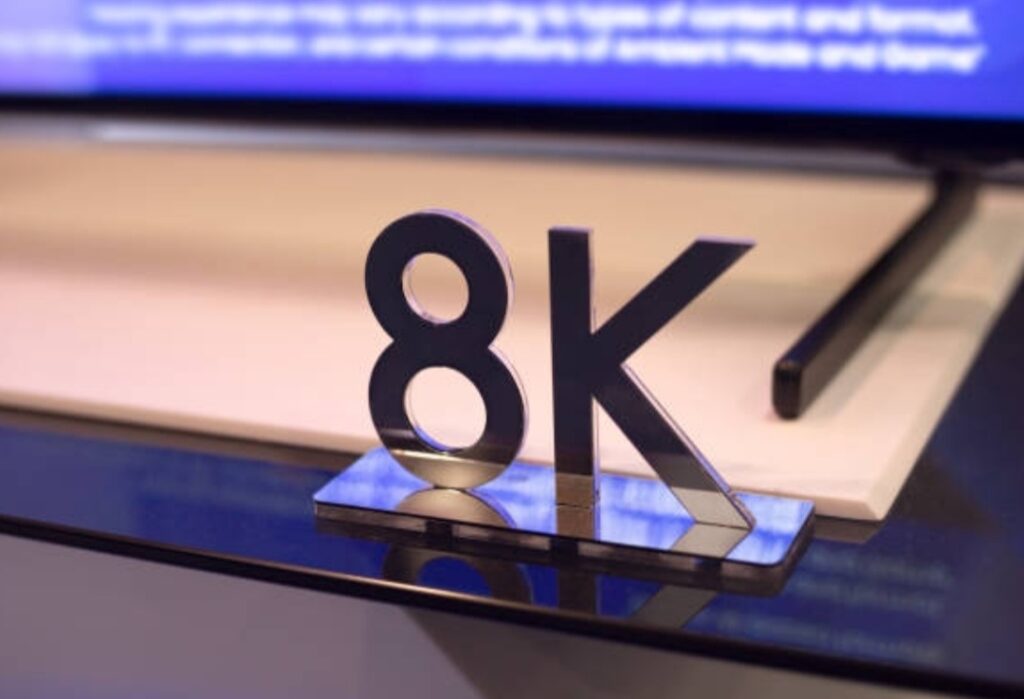
👀 Diminishing Returns on Smaller Screens
8K TVs look amazing — but only when paired with the right screen size and viewing distance.
At sizes under 65 inches, or when viewed from a regular couch distance (8–10 feet), your eyes may not even notice the difference between 4K and 8K.
That’s right — unless you’re sitting very close to a massive screen, those extra pixels may be wasted.
Why it matters:
- The human eye has limits to visual perception
- 4K resolution already looks stunning for 55″ to 65″ TVs
- You only get the “WOW” factor on larger displays (75” and up)
The upgrade may feel underwhelming if you’re not going big or sitting close.
🧾 Limited Content Support & Industry Lag
Most studios, platforms, and production houses are still focused on 4K.
It could take several more years before 8K becomes the standard across:
- Streaming services
- Gaming platforms
- Broadcasting channels
- Live events or sports
Even major events like the Olympics, which have tested 8K broadcasting, haven’t made it the norm.
Don’t buy expecting a flood of content — we’re still in the early adopter phase.
⚠️ Why You Might Want to Wait Before Upgrading
While 8K TVs offer jaw-dropping performance, the downsides are hard to ignore:
- High price and limited content
- Extra hardware and bandwidth needed
- Minimal visible improvement for average users
If you’re not a tech enthusiast or don’t plan on investing in a complete 8K-ready setup, waiting a year or two might be the smarter financial decision.
Still on the fence?
Check out our next section, where we answer the question:
“Is it actually time to upgrade to an 8K TV — or is 4K still the sweet spot?”
Stay with us — the ultimate verdict is coming up next!
✅ Should You Upgrade to 8K Now or Wait?
If you’ve been asking yourself, “Is now the right time to invest in an 8K TV?” — you’re not alone.
This is where we break down the real-world decision factors that help you decide whether to take the leap or hold off.
Whether you’re a home theater enthusiast, a future-proofing tech lover, or just looking to get the best bang for your buck — this section has you covered.
We’ll look at use cases, current market trends, and expert advice to guide your decision.
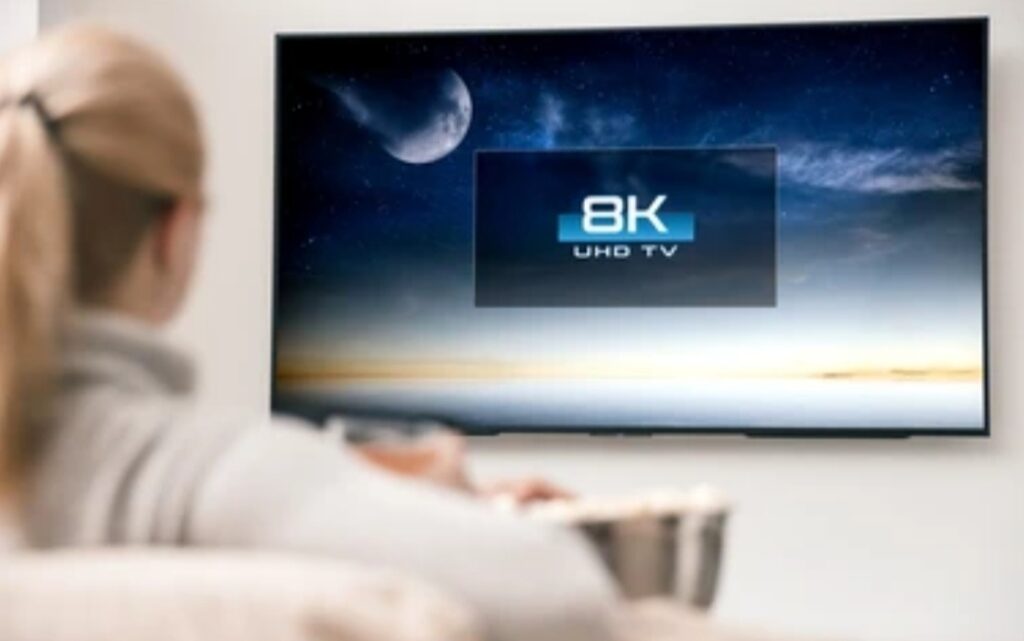
⚖️ Who Should Consider Buying an 8K TV Today?
While the average user may not fully benefit from an 8K TV just yet, there are still some niche groups who could make the most of the upgrade today:
1. Hardcore Home Theater Buffs
If you’re all about the most immersive cinematic experience possible, and you have the space for an 85” or larger display, 8K offers a level of visual clarity that’s absolutely mesmerizing.
Combine that with high-end audio systems and ambient lighting, and your living room becomes a luxury theater.
Check out premium 8K home theater systems here
2. Professional Video Editors & Content Creators
If you’re shooting or editing in 8K for YouTube, film, or commercial work, having an 8K display is a must to ensure accurate editing and playback.
Plus, you can future-proof your portfolio as 8K becomes the standard in professional settings.
3. High-End Gamers & Tech Aficionados
Got a next-gen gaming rig or console?
If it supports 8K and HDMI 2.1, and you’re gaming on an 80”+ screen, the performance and visual punch are next level.
Even though most games don’t natively render in 8K yet, upscaled 4K still looks phenomenal on these displays.
If you love owning bleeding-edge tech and always want the best, 8K might be your new obsession.
Explore top 8K gaming monitors and TVs now
⏳ Who Should Wait Before Upgrading?
For most users, waiting might be the smarter choice — especially if you fall into one of these categories:
- Budget-conscious buyers who want the best value for every dollar
- Casual streamers who primarily watch Netflix, Hulu, or YouTube
- Families and non-techies who just want a solid TV without the complications
- Gamers on older consoles that don’t support true 8K output
Right now, a high-end 4K TV gives you more content support, easier setup, and incredible visual quality — all at a fraction of the price.
Unless you absolutely need 8K today, you’re likely better off investing in a premium 4K TV with amazing HDR, refresh rate, and smart features.
📉 Market Trends & Expert Predictions
According to recent industry reports:
- 8K TVs make up less than 1% of global TV sales in 2025
- Most streaming platforms are still optimizing their 4K infrastructure
- 8K adoption is expected to grow slowly over the next 3–5 years
Even brands like LG, Samsung, and Sony are still pushing flagship 4K models because that’s where the mass market demand is.
Experts agree: 8K is the future — but we’re just not there yet.
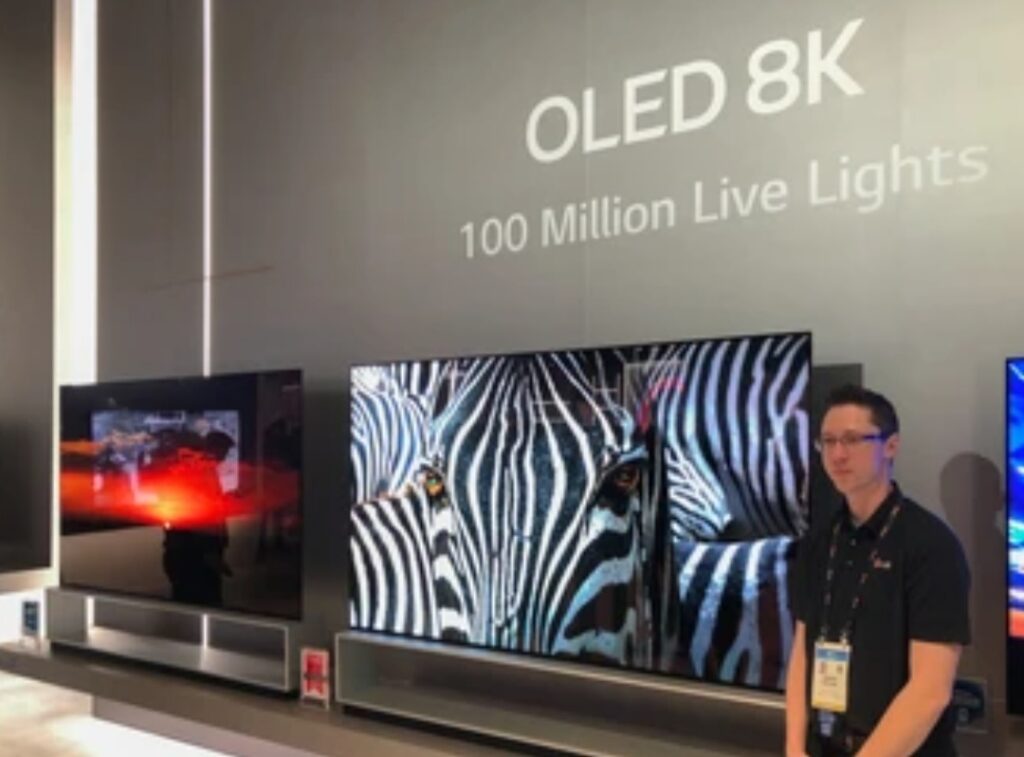
🧠 Decision-Making Checklist
Use this simple checklist to decide if you should buy an 8K TV now:
- Do you have a viewing space for 75”+ TV screens?
- Is your internet connection 100 Mbps or higher?
- Do you own a next-gen console, PC, or 8K content camera?
- Are you willing to invest in HDMI 2.1 and audio upgrades?
- Is the lack of native 8K content not a dealbreaker for you?
If you answered “yes” to at least 3 or more of the above — you might be ready to go 8K.
If not? Stick to 4K for now and revisit the upgrade in a couple of years.
✅ Final Verdict — Upgrade or Wait?
Here’s the bottom line:
8K TVs are visually stunning and powerful, but they’re not quite essential yet.
For most people, a top-tier 4K TV still offers:
- Better overall value
- More content availability
- Fewer technical headaches
But if you’re the type who wants to be ahead of the curve, has the budget, and loves exploring next-gen tech — then an 8K TV might be worth the leap.
Still debating? Don’t decide in the dark — compare the latest 8K and 4K TV models side-by-side here and make the smartest choice for your setup.
📊 8K vs 4K vs Full HD: A Clear Comparison
When deciding whether to upgrade, it’s crucial to understand how 8K stacks up against its predecessors.
Here’s a side-by-side breakdown to help you make an informed choice.
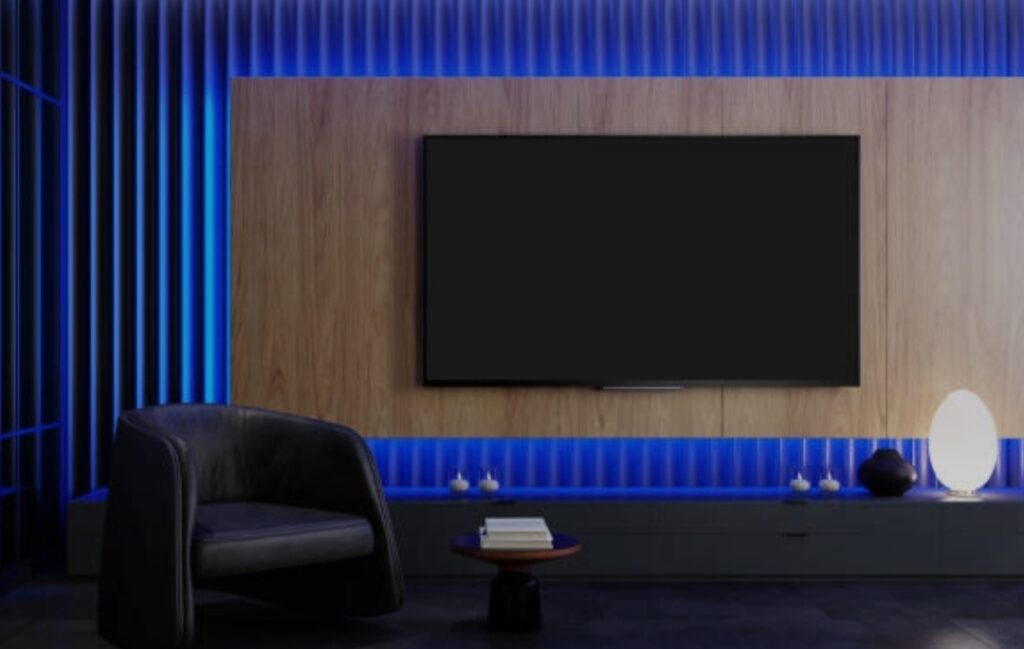
Resolution & Picture Clarity
| Feature | Full HD (1080p) | 4K Ultra HD | 8K Ultra HD |
| Pixel Resolution | 1920 x 1080 | 3840 x 2160 | 7680 x 4320 |
| Total Pixels | ~2 million | ~8.3 million | ~33.2 million |
| Image Clarity | Basic | Sharp and detailed | Hyper-real and ultra sharp |
| Screen Size Optimal | Best below 50” | Ideal 55” to 75” | Best 75” and above |
Bottom line: 8K TVs deliver a mind-blowing level of detail, but that level of clarity is really only visible on massive screens viewed up close.
Content Availability & Upscaling
| Aspect | Full HD | 4K | 8K | |
| Native Content | Abundant | Widely available | Very limited | |
| Streaming Support | Universal | Netflix, Prime, etc. | Limited platforms | |
| Upscaling Technology | Basic | Advanced | AI-based (Best) | |
| Gaming Support | Universal | Next-gen consoles | Only select setups |
Fun Fact: Most 8K TVs rely on AI upscaling to improve non-8K content — and they do a phenomenal job at it!
Price & Accessibility
| Criteria | Full HD | 4K | 8K |
| Average Price (55”) | Under $400 | $400 – $1,200 | $2,000+ |
| Bang for Your Buck | High | Excellent | Moderate (for now) |
| Mainstream Adoption | Widespread | Growing rapidly | Still early adoption |
Insider Tip: During tech sales, you might find some discounted 8K TV deals that offer massive value for future-proofing.
Which One Is Right for You?
- Full HD: Great for casual watchers or bedrooms.
- 4K: Perfect for most homes — ideal mix of performance, content, and cost.
- 8K: Best for hardcore cinephiles, home theater builds, and early adopters who want the most advanced tech.
Still wondering what fits your lifestyle best? Explore the top-rated 8K TVs here to find your ideal match and upgrade smartly.
🛒 8K TV Buyer’s Guide: What to Look for Before You Buy
Buying an 8K TV isn’t just about grabbing the highest resolution available.
It’s about making sure you’re investing in a television that matches your needs, room setup, and future-proofing expectations.
If you’re researching the 8K TV pros and cons, this guide will help you identify the key features that truly matter before you hit “Add to Cart.”
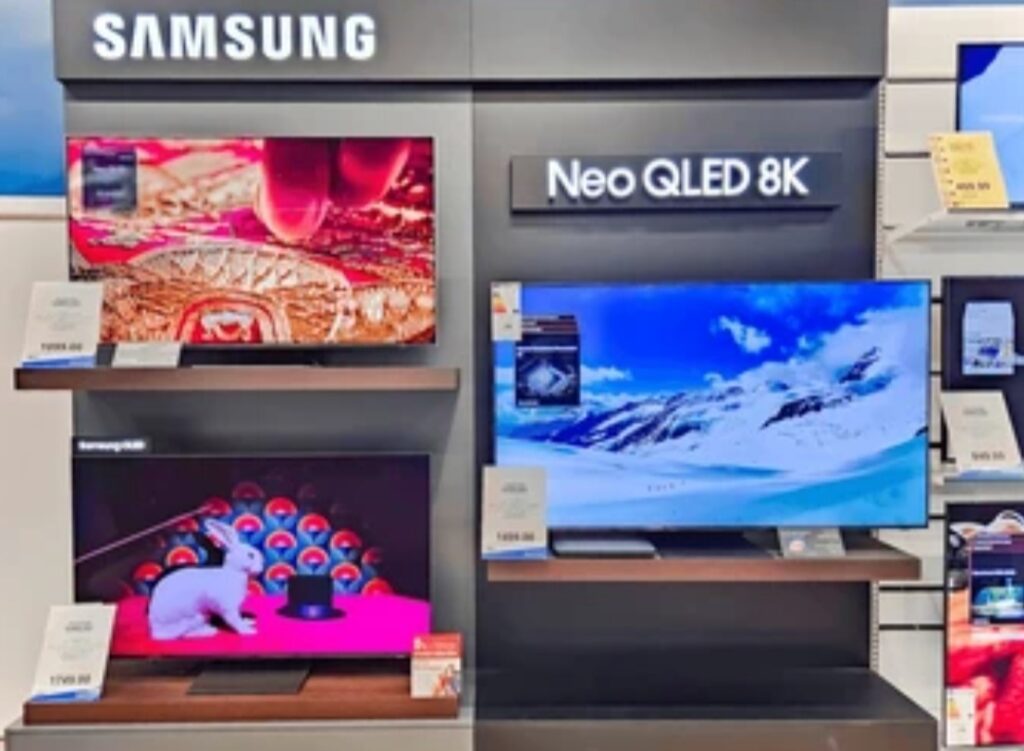
Screen Size – Go Big or Go Home
To truly see the benefit of 8K resolution, size matters—a lot.
- Recommended screen size for 8K TVs starts at 65 inches, but for full visual impact, 75″ or more is ideal.
- The pixel density of 8K only becomes noticeable on larger displays or when sitting closer to the screen.
Pro Tip: If you’re watching from over 10 feet away, consider whether a high-end 4K TV might deliver similar real-world quality for less money.
Processing Power & Upscaling Capabilities
Since native 8K content is still limited, upscaling is critical.
- Look for models with AI-powered upscaling (like Samsung’s Neo QLED with Neural Quantum Processor).
- Strong upscaling ensures your 1080p and 4K content still looks jaw-droppingly crisp.
Must-Have Feature:
AI Upscaling Technology = Crystal-clear images from non-8K sources
HDMI 2.1 Support & Gaming Features
Gamers and cinephiles should demand HDMI 2.1 ports to unlock:
- 120Hz refresh rates
- VRR (Variable Refresh Rate)
- eARC for high-end audio passthrough
- Lower latency and smooth motion handling
Bonus: Features like ALLM (Auto Low Latency Mode) elevate the gaming experience dramatically.
If you’re a next-gen gamer, choosing the right 8K-ready gaming TV makes all the difference.
HDR Support & Peak Brightness
Resolution is just one part of the picture quality puzzle.
- Look for HDR10+, Dolby Vision, and wide color gamut support.
- Peak brightness above 1000 nits is essential for punchy highlights and vibrant contrast.
Insider’s Pick: OLED or Mini-LED panels tend to provide the richest colors and deepest blacks—perfect for movie nights.
Smart Features & OS Compatibility
Don’t settle for clunky software.
- Look for intuitive platforms like Google TV, Tizen, webOS, or Roku TV.
- Built-in voice assistants (Alexa, Google Assistant, or Bixby) are now standard.
Make sure the TV supports all your favorite streaming apps in native 4K or better.
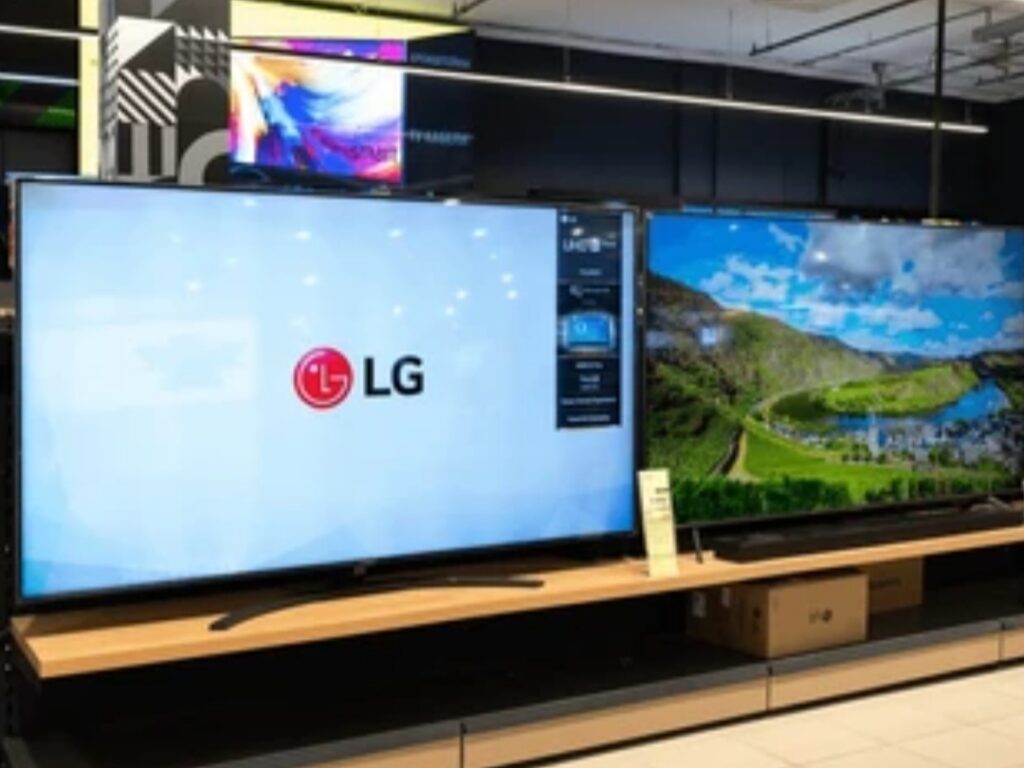
Price vs Value – Is It Worth the Splurge?
Let’s be real: 8K TVs aren’t cheap.
- Entry-level 8K TVs start around $2,000
- Premium models can exceed $5,000
But with that comes future-proofing, best-in-class visuals, and jaw-dropping performance.
Ask yourself:
- Will you be watching content close enough to notice 8K resolution?
- Are you planning to keep this TV for 5–10 years?
If you’re looking to future-proof your home theater, now is the perfect time to grab the best 8K TV deal available today.
Trusted Brands to Consider
When investing in a cutting-edge display, reputation matters.
Here are some top-rated 8K TV brands:
- Samsung – Known for premium QLED and AI upscaling
- LG – Industry leader in OLED 8K TVs
- Sony – Amazing picture processing with XR processors
- TCL & Hisense – Budget-friendly 8K options emerging
Look for warranties, return policies, and verified reviews before making a final choice.
❓ Frequently Asked Questions About 8K TVs
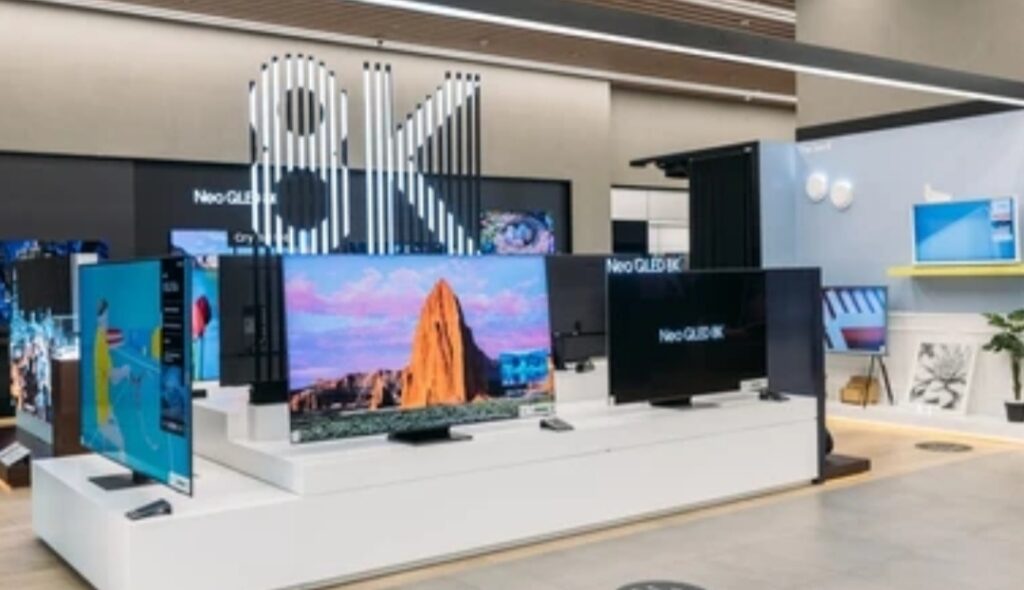
❓ Is an 8K TV worth it right now?
It depends on your needs.
If you’re a content creator, hardcore gamer, or home theater enthusiast with a large screen (75” or more), an 8K TV could be worth it.
However, for most users, a high-end 4K TV still offers better value, more content compatibility, and fewer upgrade headaches.
When comparing 8K TV pros and cons, the lack of widespread 8K content is a major con to consider before purchasing.
❓ What are the main pros and cons of 8K TVs?
Here’s a quick breakdown of the major 8K TV pros and cons:
Pros:
- Ultra-crisp resolution (7680 x 4320 pixels)
- Incredible detail on large screens
- Future-proofed for upcoming content
- Great for upscale 4K/HD content
Cons:
- Expensive price point
- Very limited native 8K content
- Requires fast internet for streaming
- Diminishing visual returns under 65”
Hook: Still deciding? Click here to compare the top-rated 8K TV models with real customer reviews.
❓ Can the human eye see the difference between 4K and 8K?
Yes — but only in certain conditions.
To see a noticeable difference between 4K and 8K, you need:
- A very large TV (usually 75”+)
- To sit closer to the screen (under 6 feet)
- Native 8K content (not upscaled)
For average living room setups, the visual difference between 4K and 8K is minimal.
❓ Is there enough 8K content available to watch?
Right now, 8K content is limited.
You’ll find some demo footage on YouTube and a few nature documentaries shot in 8K, but Netflix, Disney+, and Prime Video currently don’t offer mainstream 8K titles.
Most of what you watch will be upscaled from 4K or HD.
❓ Will streaming services support 8K in the future?
Yes — but it may take several years.
Services like YouTube already support 8K uploads, and platforms like Netflix and Apple TV+ are testing 8K internally.
However, they need:
- Faster internet infrastructure
- Better video compression
- More widespread 8K TV ownership
Until then, streaming in true 8K remains rare.
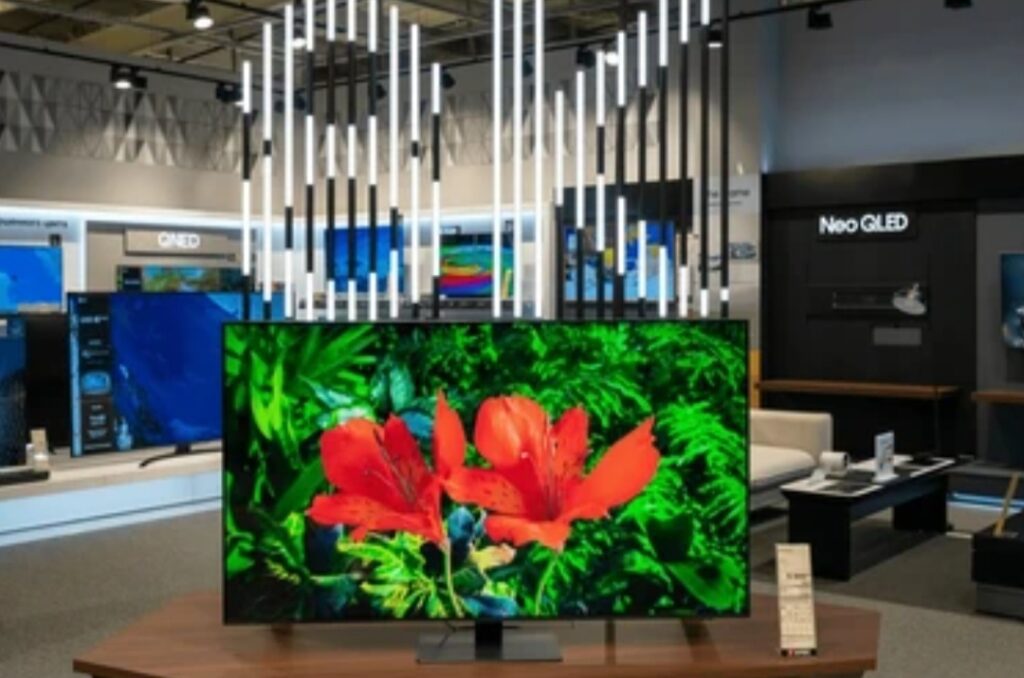
❓ How big should a TV be to benefit from 8K resolution?
Experts recommend a minimum screen size of 75 inches to fully benefit from 8K resolution.
The bigger your screen, the more pixel density you’ll notice.
If your TV is under 65”, the difference between 4K and 8K is nearly invisible from a normal viewing distance.
❓ What kind of internet speed do I need to stream in 8K?
Streaming 8K content requires blazing-fast speeds — ideally 100 Mbps or higher.
You’ll also need a TV that supports advanced codecs and apps that allow 8K playback.
For reference, streaming 8K on YouTube at full quality can consume up to 50GB per hour.
❓ Do gaming consoles support 8K TVs?
Partially.
Both the PlayStation 5 and Xbox Series X support 8K output, but few games natively run in 8K.
Most current-gen games use upscaling technologies like DLSS or checkerboarding to improve visuals on 8K displays.
For gamers, a 4K TV with 120Hz refresh rate may still be the smarter choice today.
❓ Are 8K TVs future-proof?
Yes — but with a caveat.
8K TVs will likely become standard within the next 5–10 years, and owning one now positions you ahead of the curve.
However, you’ll need to upgrade other components (like HDMI 2.1 cables, high-speed routers, and next-gen consoles) to fully utilize the tech.
CTA: Want to stay ahead of the curve? Shop future-ready 8K TVs with advanced AI upscaling features here.
✅ Final Thoughts — Is 8K the Future or Just Hype?
The world of television technology is evolving at lightning speed.
With each leap — from HD to 4K, and now to 8K — viewers are promised an even more immersive experience.
But when it comes to 8K TV pros and cons, the truth is a little more nuanced.
So, is now the right time to invest in an 8K TV? Or should you wait for the technology and content to catch up?
Let’s break it down.
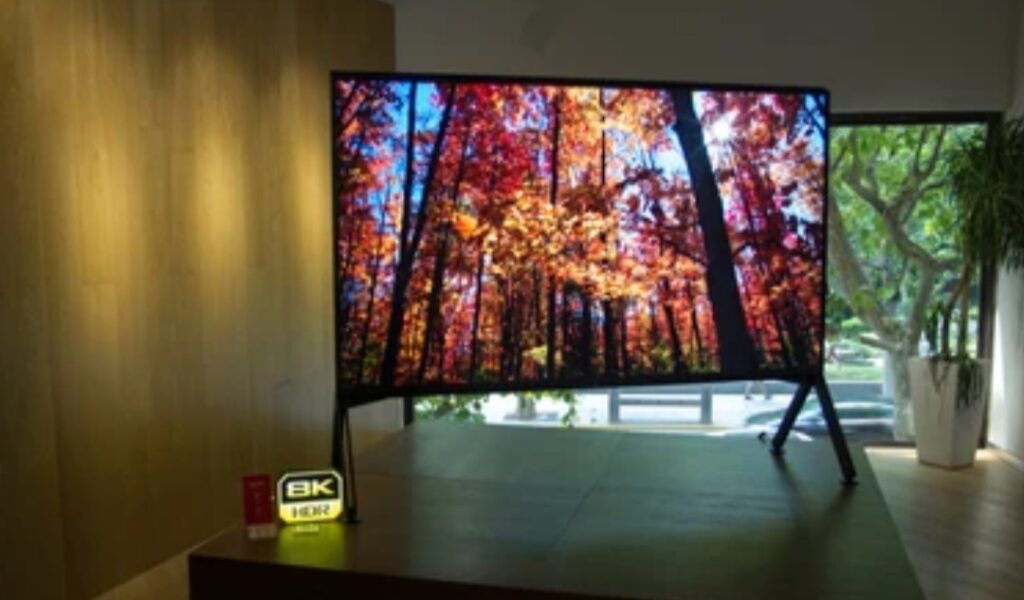
8K Is Visually Stunning — But Not Yet Essential
There’s no denying the jaw-dropping clarity of 8K resolution.
If you’re watching native 8K content on a massive 75”+ screen, it looks absolutely breathtaking.
But unless you’re a video perfectionist, early adopter, or creating content in ultra-high resolution, a premium 4K TV might make more practical sense right now.
Why?
- 4K TVs offer incredible performance for less.
- There’s vastly more 4K content.
- Most people won’t visually notice the upgrade unless sitting very close.
The Market Is Still Catching Up to 8K
Let’s be honest — the ecosystem around 8K is still maturing.
Here’s what’s still missing:
- Mainstream 8K streaming
- Affordable 8K-capable GPUs and gaming consoles
- Massive internet bandwidth availability
Until those stars align, many users might feel like they’ve overpaid for a feature they rarely use.
One of the most critical cons in the 8K TV pros and cons debate is that content hasn’t fully caught up with the hardware.
Future-Proofing Matters — But Only If You’re Ready
If you’re someone who keeps your tech for years, investing in an 8K TV now could be a smart future-proof move.
As streaming services, media, and games evolve — your setup will be ready.
But if you tend to upgrade every few years anyway, you might want to let the prices drop and the content library grow before making the leap.
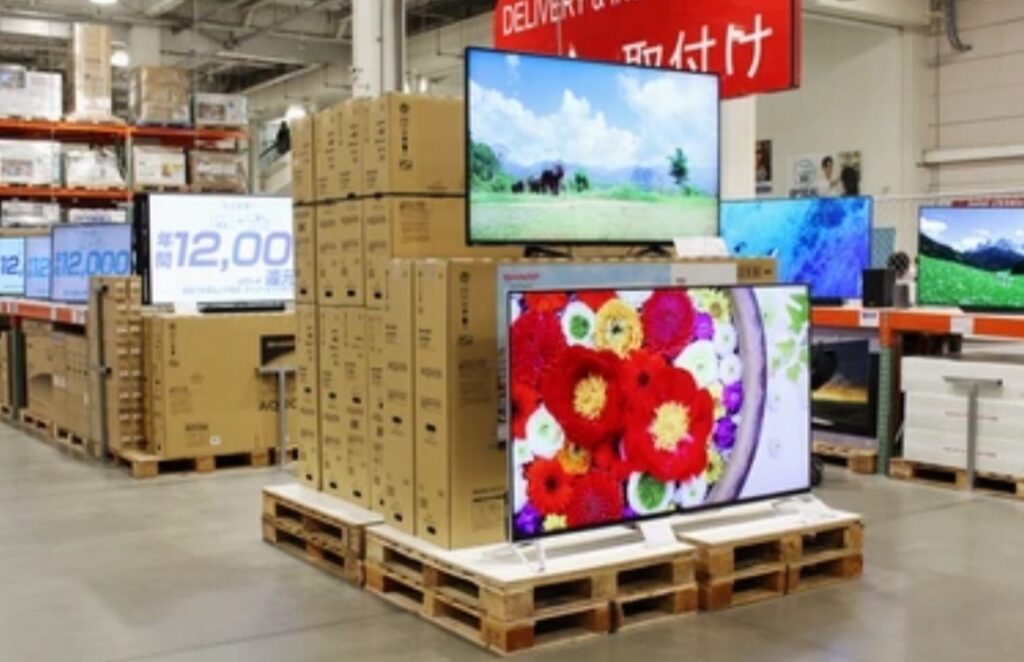
Should You Upgrade to 8K Now or Wait?
Here’s a simple way to decide:
| Consider Upgrading Now If You… | Hold Off for Now If You… |
| Have a 75”+ TV or home theater setup | Own a 4K TV that still works great |
| Want the best upscaling & picture quality | Mostly watch streaming content in HD or 4K |
| Have high-speed internet & top-tier HDMI cables | Don’t sit super close to the TV |
| Are a tech enthusiast or content creator | Are budget-conscious or value-focused |
Pro Tip: If you’re shopping during big sales events like Black Friday deals on 8K TVs, you might score a future-ready set for a steal.
So, Is 8K the Future of Home Entertainment?
Yes — but it’s not the present for everyone.
8K is absolutely the future of home entertainment, just like HD and 4K were once revolutionary.
But right now, it’s a luxury investment — not a must-have — for the average household.
If you’re ready to invest in the best, go for it.
If not, a top-tier 4K TV will still wow you for years to come.
Final Verdict: Is It Time to Upgrade?
In the great battle of 8K TV pros and cons, the verdict comes down to:
✔ YES, upgrade if:
- You want the most advanced display tech
- You’re building a cinematic setup
- You value future-proofing
✘ NO, hold off if:
- You’re on a budget
- You mostly stream in HD or 4K
- You sit more than 8 feet from the screen
Still undecided? Compare the best 8K TVs side by side right here and discover what fits your viewing style.
You might also like :

